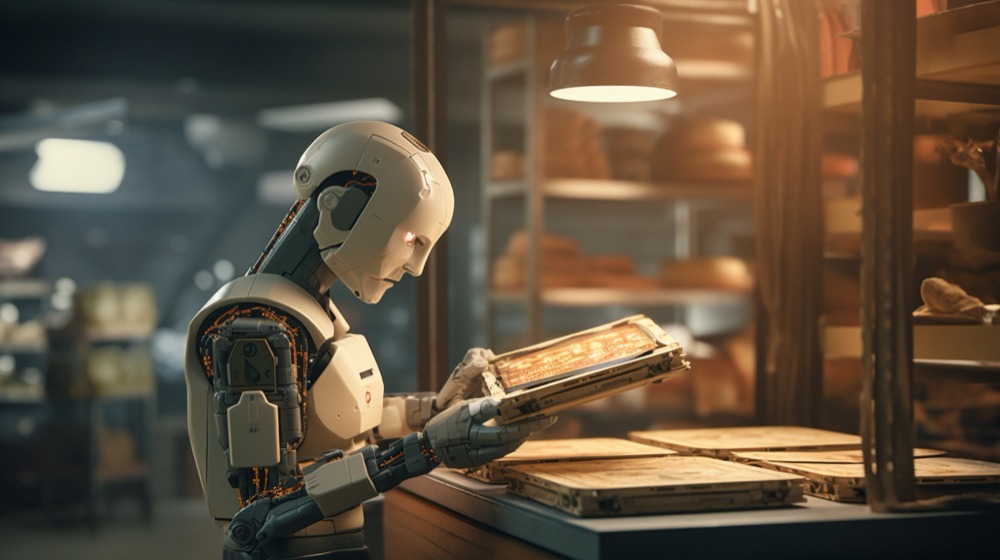Introduction
The concept of artificial intelligence (AI) creating art has captured imaginations for decades. From science fiction movies depicting sentient robots composing symphonies to headlines about AI-generated paintings fetching high prices, the question remains: can AI truly create a masterpiece in 2024?
This blog delves into the evolving relationship between AI and art, exploring the capabilities of AI art tools, the debate surrounding AI’s role in artistic creation, and the potential future of this dynamic collaboration.
AI in the Art Studio: Tools and Techniques
The world of AI art is vast and ever-evolving. Here’s a glimpse into some of the tools and techniques currently used:
- Generative AI: These algorithms are trained on massive datasets of existing artwork and can generate entirely new pieces that mimic various styles and artistic movements.
- Style Transfer: This technique allows users to apply the artistic style of one image to another, creating unique and surprising results.
- AI-powered Image Editing: AI tools can edit existing images, offering capabilities like color correction, content creation within a scene, and even realistic manipulation of existing elements.
- Interactive AI Art Installations: These immersive experiences use AI to respond to user input, creating dynamic and personalized art experiences.
- AI-assisted Composition and Design: AI tools can assist artists with tasks like composition, color palette generation, and pattern creation, freeing them to focus on the more expressive aspects of their work.
The Debate Heats Up: Can AI Be a True Artist?
The rise of AI art raises questions about the nature of creativity and the role of the artist. Here are some key arguments in the ongoing debate:
- The “Machine as Tool” Argument: Proponents of AI art see it as a powerful tool for artists, similar to how a paintbrush or a camera is a tool. They argue that AI can enhance creativity by automating tedious tasks and sparking new ideas.
- The “Lack of Human Emotion” Argument: Critics argue that AI lacks the emotional intelligence and lived experiences that are essential for creating truly meaningful art. They believe art is a product of human expression, and AI cannot replicate the depth of human emotion.
- The “Originality Debate”: Some argue that AI-generated art simply remixes existing styles and lacks true originality. Others argue that AI can create surprising and innovative results, pushing artistic boundaries in new directions.
- The “Democratization of Art” Argument: AI art tools have the potential to make art creation more accessible. Anyone with an internet connection can experiment with AI art generators, potentially fostering a more inclusive art scene.
The Future of AI Art: Collaboration, Not Competition
While AI may not single-handedly create a masterpiece in 2024, its role in the art world is likely to continue growing. Here’s what the future might hold:
- AI as a Co-creator: The future of AI art might lie in a collaborative approach, with AI assisting artists in various aspects of the creative process.
- Personalized Artistic Experiences: AI could personalize art experiences, allowing viewers to interact with and even co-create art pieces.
- New Artistic Movements: AI could pave the way for entirely new artistic movements that combine traditional and digital techniques in innovative ways.
- Evolving Art Education: AI tools could revolutionize art education by offering students new ways to learn about art history, experiment with different styles, and develop their creative skills.
- Ethical Considerations: As AI art technology advances, discussions about ownership, copyright, and the ethical implications of AI-generated art will become increasingly important.
Beyond the Binary: A Spectrum of Artistic Creation
The relationship between AI and art is not a competition between human and machine. It’s a spectrum of creative possibilities. AI can:
- Spark Inspiration: Help artists overcome creative block and explore newartistic directions.
- Augment Artistic Skills: Assist with tedious tasks like color correction or detailed background creation, freeing artists to focus on more expressive aspects.
- Democratize Art Creation: Make art creation more accessible for everyone,regardless of artistic background or technical skills.
- Push Artistic Boundaries: Lead to the development of new artistic movements and expressions that blend traditional and digital techniques in innovative ways.
However, AI still lacks several key qualities associated with human art:
- Emotional Intelligence: Art often conveys emotions and experiences. AI currently struggles to replicate the depth of human emotion that can resonate with viewers.
- Intention and Meaning: Human artists imbue their work with intention and meaning, drawing on their life experiences and perspectives. AI-generated art may lack this inherent meaning-making aspect.
- Critical Thinking and Judgment: Artists make choices throughout the creative process, selecting elements and techniques. AI currently relies on algorithms and training data, lacking the critical thinking and judgment of a human artist.
Conclusion
The ability of AI to create a masterpiece – in the traditional sense – is still a topic of debate. However, AI has undeniably become a powerful tool for artists, capable of enhancing creativity, sparking new ideas, and making art creation more accessible.The future of art lies in a collaborative approach, where AI empowers human creativity and together they push the boundaries of artistic expression. Embrace the potential of AI art, but remember, the human touch – with its emotional intelligence,intentionality, and critical thinking – will remain an essential ingredient in creating truly masterful works.


